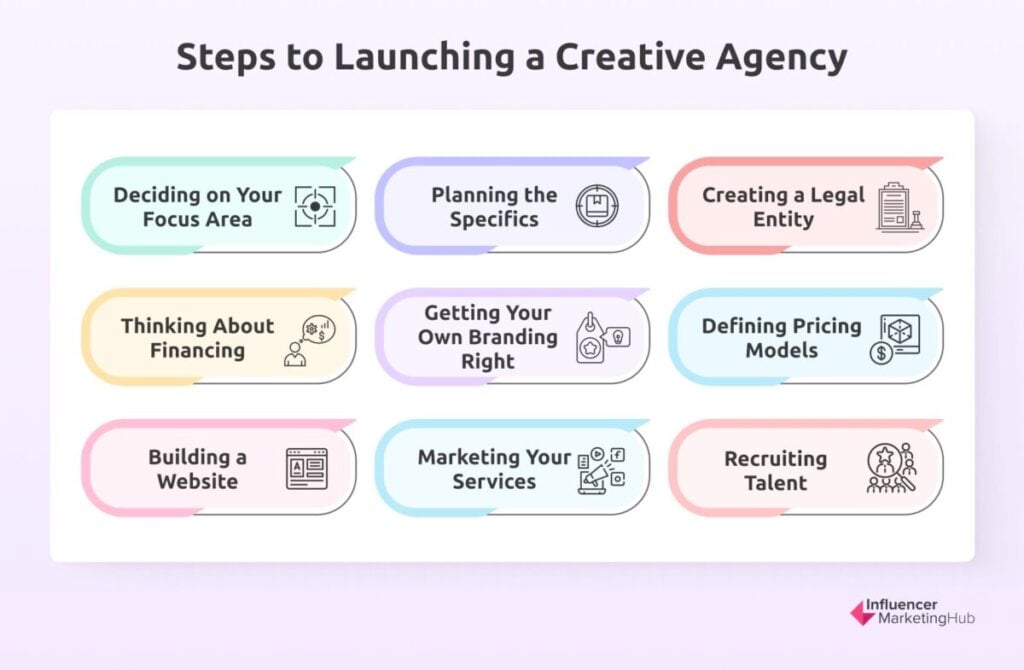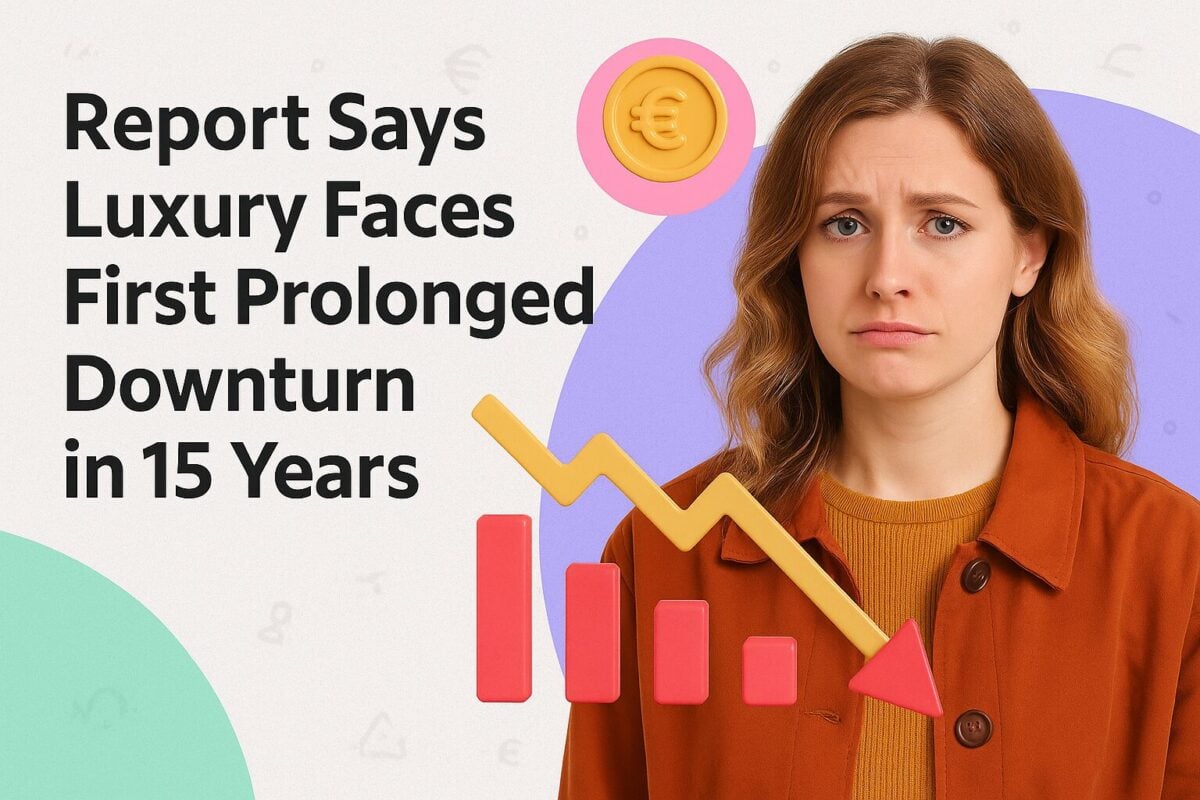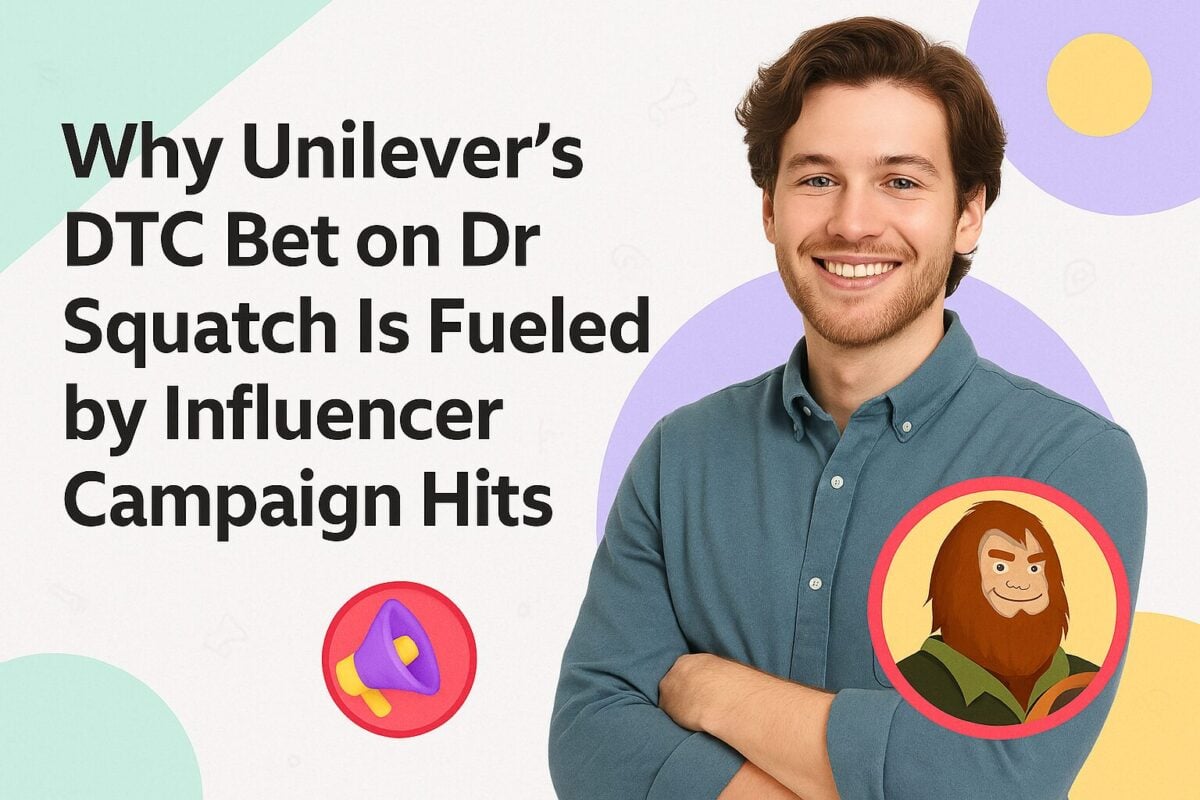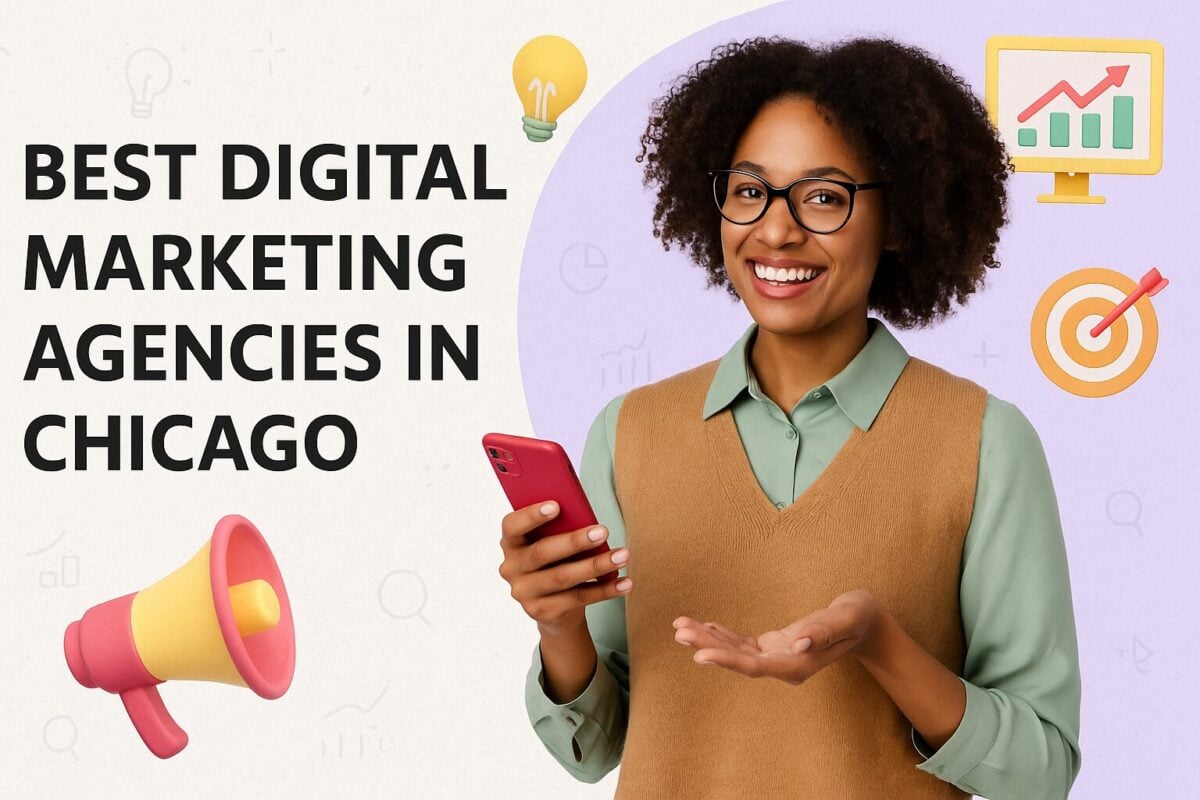The idea of being your own boss appeals to most. For creative professionals, the next step is often to start a creative agency.
A quick online search will review several resources offering generic how-to guidance for starting a creative agency from scratch. In this guide, we dig deeper. We pack it with examples from industry.
| Influencer Marketing Hub's Favorite Agency Stories About Beginnings:
Jacob Tyler - ?️Bedroom Office, Global Reach:
Motto® - ?♀️ College Dropouts, Rebranding Other Companies:
WANT Branding - ?One Service, Award-winning Branding Agency:
|
Remote work practices and technological advancements have wiped out many of the barriers to entry that discouraged professionals coming from a marketing background to go solo. In 2024, it’s much easier to give business legitimacy to a freelance business.
Combine that with consumers’ shift to digital and appreciation for authentic branding and there’s a real need for creative agencies. Younger generations in particular give more weight to online presentations. An analysis of Gen Z spending habits reveal that almost 60% find it easier to remember a website’s color than a person’s eye color.
Where digital marketing agencies generally concentrate more on marketing strategies like content writing and social media marketing, creative agencies are skilled at branding and design (aka getting that website color scheme right). If 50 shades of gray get you excited (and no, it’s not a reference to the novel), running your own creative agency might just be your calling.
Starting a Creative Agency: Essential Steps and Tips for First-time Success:
Steps to Starting a Creative Agency in 2024
Deciding on Your Focus Area
From graphic design to executing ad campaigns, there are various areas that your services can cover. Starting a full-service agency that offers all the main services is only a realistic route if you have all the capabilities.
Let your strengths guide you.
For example, if you’re exceptionally good at social media marketing and video production, social media video ads would be an obvious choice.
Let your passions also guide you.
While you should have the skill set, you can give thought to what you actually enjoy doing. There’s room for that. For some; the idea of market research is boring. Others, on the other hand, much prefer the idea of gathering data over designing creative assets.
Your passion and strengths can also be turned into a unique selling point, helping to set yourself apart from other creative agencies.
For example, WANT Branding started out as a naming company. Fast-forward over 20 years and they’re now known for brand strategy, brand identity, and brand research too. This specialist approach has helped them to get recognized on a national level as one of the leading B2B corporate branding agencies.
Planning the Specifics
Like other types of businesses, creative agencies can also benefit from a SWOT analysis. It’s a popular planning strategy that helps you to uncover internal strengths and weaknesses as well as external opportunities and threats.
When you shortlisted your focus area, you already identified your internal strengths. After completing a proper SWOT analysis, more strengths might pop up which can steer you in another direction.
Using the other information that this analysis dishes up, you’re set to uncover opportunities in the market. This will help you to plan other specifics like your target market.
Do you perhaps have unique insight into a specific industry? Maybe there’s increased demand for a specific service like social media video ads? You can combine this with gaps in the market to carve a niche.
Creating a Legal Entity
It’s advisable that you establish some form of legal entity for protection. General partnerships, sole proprietorships, and limited liability corporations (LLCs) are the most popular structures.
These types of structures differ in terms of the tax benefits and personal liability protection that they offer. Let the level of risk involved and size of your client pool guide you. For example, bigger creative agencies or those looking to scale will generally benefit more from a formal structure like an LLC.
That said, it’s no replacement for proper business insurance. Aside from ensuring your physical assets, like the desk in your new corner office and all your new shiny tech toys, are protected, you’ll also need professional liability insurance. This will offer added protection in case a client files a lawsuit for negligence or violation of good faith, for example.
Thinking About Financing
You’ll need cash flow to get you through those first few months. Sure, Motto® pulled it off with only $250, but that’s rare. Before you attract paying customers, expenses like website development, marketing, software subscriptions, etc. will need to be paid.
Aside from knowing how you’ll cover the startup costs, you’ll also need to make other financial arrangements. Even if you’ll be starting out as a one-person show initially, it’s best to separate your personal and business finances immediately for personal asset protection. Plus, opening a business account also makes it easier to apply for a business credit card (which you’ll need for all those client lunches, of course).
Richard Attwater, the co-founder of Sergeant Walnuts, a creative agency based in the UK, shares in an interview about start-up advice with Creative Bloq that you should hire an accountant before you do anything else. In addition to financial planning, an accountant will also help you get registered correctly, obtain necessary permits and business licenses as well as walk you through the process of registering for all the taxes applying to your chosen business structure.
Getting Your Own Branding Right
Branding is one of the key services offered by most creative agencies, making this step even more crucial. The stakes are high with this step. No doubt, you’ll be judged on your own branding by potential clients.
Deciding on a name for your creative agency will very likely be the hardest part. It might be only a few words, but it can take weeks to find that name that speaks to you.
You can use things that inspire you as an inspiration for your own name, that's what worked for Sergeant Walnuts. Being a fan of Bob Mortimer, they bought one of his cat names that he from time to time sells on social media.
Whether you’ve taken the unconventional route of buying a fictional cat name or had your own Eureka moment, double-check that the business name is available as a domain too. Even if you're starting a brick-and-mortar agency, you’ll need a website (more about this later).
You’ll also need a strong, unique brand identity to go along with that name. Then, you’ll need to design brand assets such as a business logo, tagline, and mission statement to communicate that brand identity across all touchpoints.
For examples of what great branding looks like in real life, you can turn to brands like Netflix, GoPro, and Shopify. Even though you might not have used their services or products before, you know these brands already, evidence of the memorable brand they’ve built.
Defining Pricing Models
In addition to defining your services, you’ll also need to decide beforehand on your pricing models. Unlike your list of services that will be displayed prominently on your website, your pricing models will most likely be reserved only for leads that enquire.
That said, don’t mistake pricing shared upon request for hidden fees. To build and maintain trust among potential clients, you need to have transparent pricing. Here's a breakdown of the common pricing models that established creative agencies typically adopt:
- Packages: Bundling services together at fixed prices. Increasingly more agencies are including customizable packages to set clear expectations and streamline decision making.
- Hourly rates: Using the time spent on a specific task or project and charging accordingly. Hourly rates are less often used for big projects and typically reserved for consultations or add-on services. As transparent pricing is important to clients, be sure to use a system/tool to track billable hours accurately to avoid that they feel they aren’t getting enough value.
- Retainer model: Charging a set monthly fee for ongoing services. It enables agencies to create a predictable income stream, while clients know upfront costs and enjoy consistency across their marketing campaigns.
- Project-based pricing: Setting a fixed price for the whole project with deliverables and timelines set out. It’s commonly used for one-off projects and gives clients peace of mind as they know what the project will cost upfront.
- Value-based pricing: Pricing is based on the return on investment the service is expected to deliver.
Once you’ve decided on a pricing model, turn your attention to the average rates for your industry. You want to remain competitively priced (especially when you’re only starting out), yet profitable.
Offering an introductory offer can help to get your foot in the door. Though, ensure that you’re specific about the terms so that your lower introductory offer doesn’t become your standard rate. Alternatively, offering a discount for a long-term contract can also make it easier to sign new clients and create that predictable income mentioned earlier, making it a double win.
Building a Website
Like your brand identity, potential clients will also judge your capabilities, specifically your design services, on your business website. There are a few non-negotiables when it comes to designing your website. Here's a breakdown of the top three areas to prioritize:
- Mobile responsiveness: Many, if not the bulk, of your potential clients will use their mobile devices to search for a creative partner. What’s more, Google also uses mobile-friendliness as a ranking factor. If you’re not building your website from scratch, most website builders offer a mobile-responsive theme too. Lack of skill can’t be used as an excuse in 2024.
- Search engine optimization (SEO): While it will also form part of one of your marketing strategies, start paying attention to SEO during the design phase too. Basically, you want to design a website that loads fast across various device types and ranks highly for relevant keywords.
- User-friendliness: Browsing your website should be an enjoyable experience. Future and current clients must be able to find what they need easily.
A big part of delivering creative services is knowing what’s currently trending and using that to create a unique brand or ad. In the case of website design, you can use design trends like custom illustrations, VR and AR elements, and standout typography. These are all examples of current website design trends which will help to communicate to website visitors that you stay up to speed.
When going this route, though, remember to follow the trends and mind your own branding. Having custom illustrations five years after it stopped trending or using it on your website when your brand uses this style nowhere else will only hurt your image.
Marketing Your Services
Word-of-mouth advertising is the ultimate goal, but before that can happen you’ll have to market your own array of services actively. When you spent time designing your website, you would’ve started with your SEO strategy already. In addition to SEO, start with the following two cost-effective strategies first:
-
Directories
Getting listed on directories is great for lead generation. Directories are go-to resources for those ready to hire a creative firm. You don’t need to look too far, directories within the Influencer Marketing Hub network can boost your visibility among an audience with commercial intent.
-
LinkedIn Outreach
You’ll essentially be marketing to business owners, whether that’s a tech company or fashion label. While you’ll need a presence on several social media platforms, outreach is best reserved for LinkedIn.
In addition to business owners, you’ll also find other decision-makers, like a Head of Content Marketing, for example. Some businesses choose to outsource certain types of projects when their own in-house team lacks the capacity.
Aside from the lead generation potential, LinkedIn is also ideal for networking. At some stage, you’ll need to appoint full-time employees.
Recruiting Talent
When you’re delivering a creative service like advertising services, bouncing ideas off other team members is a key step before pitching an idea to your corporate clients. Aside from the new perspectives and feedback, having a core team will also enable you to offer various services.
Sure, you’ll have AI-powered marketing tools in your tech stack for services like graphic design and content writing. However, that’s to make the jobs of your human employees (versed in artificial intelligence and other trends and tools) easier.
Use your mission statement, vision, and core values to identify creatives who’ll be a good match. If everyone is on the same page and buys into what you’re trying to do, creating a positive workplace culture will come more naturally.
Job postings and interviews are good opportunities to highlight these values. It will also help applicants to get more excited about the opportunity.
Before you share job postings on recruitment channels like LinkedIn and forums, ensure that you know exactly which skills are needed. The formula is to find marketers with specialized skills in a specific area like branding as well as a general understanding of advertising services and the creative process.
Individual skills matter, but keep in the rest of the team too. You’re looking to find a balance between experienced professionals and candidates with the potential to grow and contribute fresh perspectives.
TLDR Summary: Practical Steps to Starting a Creative Agency
Decide on a niche: You can always expand your scope later. Start with what you know how to do well now and what you actually enjoy doing. While your services can grow, your unique value proposition should be clearly defined from the start. This will help you avoid trying to be everything to everyone, a recipe for failure in this industry.
Small details matter for the big picture: Ensure that you have your ducks in a row beforehand. Building an agency from the ground up takes years and you’ll want to ensure that your business as well as personal life are protected. Having peace of mind about these things will also free up mental capacity needed to succeed in this industry.
Build a network: You’ll need tools and a team. Having other talent to support you enables you to offer more services and ultimately take on more work. Giving them the tools needed to do the job, whether that’s optimizing ad placement or designing business cards, will give your agency more legitimacy in the eyes of your clients.
Market yourself: While you’ll be offering marketing services, you’ll also need to invest in your own marketing. You’ll need a professional website to which you can direct all your marketing efforts. In addition to building a website, also focus on how you can use social media to reach businesses. Both — a website and social media profiles — are essential.
Frequently Asked Questions
Which roles do you need to fill when starting a creative agency?
Depending on the services offered, creative agencies typically hire the following professionals:
- Consultants
- Graphic, website, and UX designers
- Website developers
- Content writers
- Strategists
- Video producers
- Branding experts
- Digital marketers
- A creative director
What does a creative director do?
A creative director takes the lead of the creative team. They’ll ensure that there’s a cohesive style that matches the client’s vision and that the look and feel are implemented across digital and print correctly. Creative directors will also be responsible for supervising the whole creative process and guiding the rest of the team.
Why do businesses hire creative agencies?
In addition to their services, businesses also turn to creative agencies for other benefits like a new perspective and access to a network. Creative agencies can draw from their own industry experience and market research to uncover opportunities and share new insights. They also have professional relationships with other production companies and creatives that can help in-house marketing teams. And, for those businesses without an in-house marketing team, outsourcing projects to an agency can work out more affordable.




